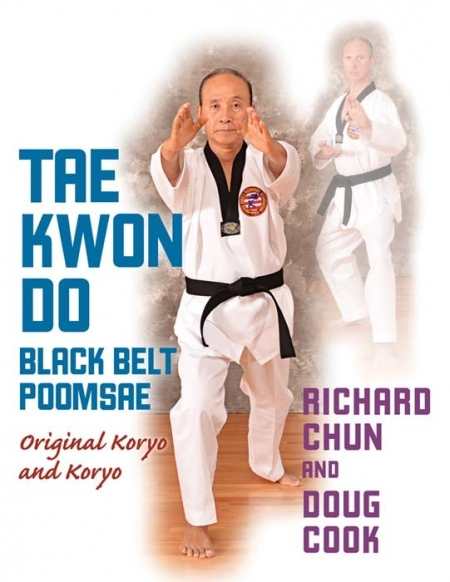Taekwondo Black Belt Poomsae
Original Koryo and Koryo
Not for beginners, Taekwondo Black Belt Poomsae expands technical knowledge for advanced practitioners.
Advanced taekwondo practitioners looking to further expand their understanding and ability in their craft need to look no further than Taekwondo Black Belt Poomsae: Original Koryo and Koryo. Authors Richard Chun and Doug Cook share both practical and theoretical wisdom with students.
The book examines two poomsae of the martial art—Original Koryo and Koryo. Poomsae, according to the book’s appendix, is “Traditional choreographed formal exercise”—but if you don’t already know that, this book is probably not for you. Koryo is a required set of skills for first-degree black belts who want to advance to second degree. Original Koryo is Koryo’s lesser-known predecessor. The key aim of this book is to balance and enrich the taekwondo community by explaining the practices of both.
Before delving into these how-to details, there are about fifty pages on the history and philosophy of Original Koryo, Koryo, and taekwondo in general. To those outside martial arts, this may seem like overkill, but to the passionate devotees who the book is geared toward, it will be an engaging read. Knowing how forms and practices developed adds depth and meaning to the movements discussed in the rest of the book. This section has a formal, encyclopedic tone. The style is clear and grammatically correct, but it can feel a bit straightforward and dry at times—it requires readers to bring their own enthusiasm to the text.
The how-to section—which is the heart of the book—features helpful step-by-step photos and diagrams of foot placement and movement alongside every step in both poomsae. The movements are explained well, but they’re not bogged down with details that advanced martial artists don’t need. The photos are a light black and white, and the people and details often blend into the background. Color photos or a higher-contrast solid background would help.
The table of contents meticulously lays out the orderly structure of the book: history, basic elements, series of positions, combat applications, and closing reflection. The abundance of information makes the table of contents quite useful, but the full-of-words pages look a little intimidating. The book is organized in a logical way going from general concept, to specific concept, to application—built on a strong philosophical foundation. Experienced taekwondo artists will find the book insightful and simple to follow along with.
Chun and Cook ensure advanced practitioners have everything they need to understand and use the techniques in the book.
Reviewed by
Melissa Wuske
Disclosure: This article is not an endorsement, but a review. The publisher of this book provided free copies of the book and paid a small fee to have their book reviewed by a professional reviewer. Foreword Reviews and Clarion Reviews make no guarantee that the publisher will receive a positive review. Foreword Magazine, Inc. is disclosing this in accordance with the Federal Trade Commission’s 16 CFR, Part 255.

